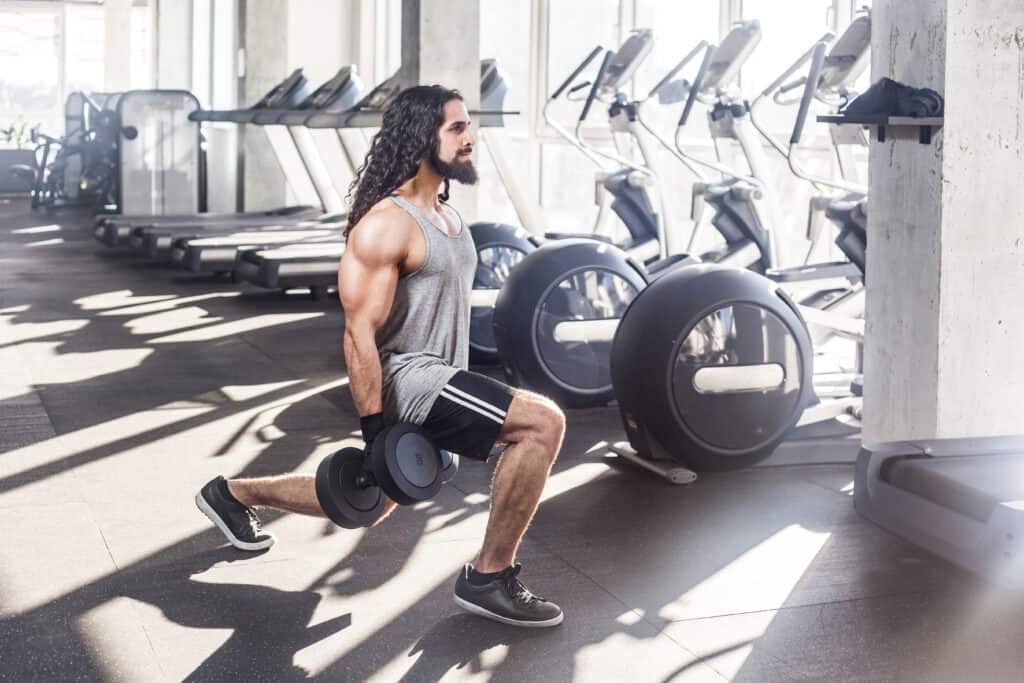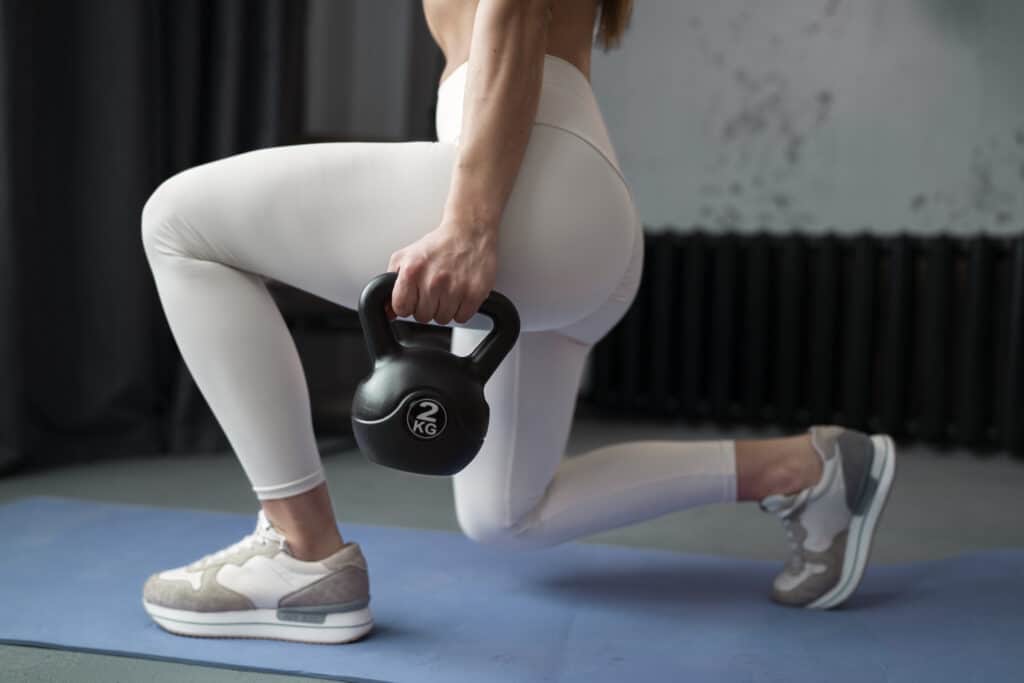Workouts may take a bit longer, but the benefits of doing single-leg exercises, or unilateral exercises, far outweigh that issue. Moreover, performing these types of leg exercises regularly can improve balance, functional ability, correct muscle imbalances, and increase core strength. Knowing that, the better question might be why would you not do them? Unilateral exercises require only a single-leg or single-arm to perform.
Just about everything we do is based off a single-leg movement. Movements such as walking, running, skipping, forms of jumping and climbing a flight of stairs, all utilize one-leg. Trainer and physical therapist, Michael Sylvester, owner of TheFitnessDocs, states, “when we walk or run, 60 percent of the gait cycle is bearing our entire bodyweight on one-leg.”
Single-Leg Exercises Mimic the Way We Move
Leg exercises, especially single-leg exercises, mimic the way the body moves naturally (i.e. gait pattern) in everyday life and during athletic events. We want to train the body the way we move in life and in sport. Using lower body unilateral exercises in a workout will check off those two boxes. Compound exercises, also known as bilateral exercises, like a squat or deadlift are of course important. If an athlete is trying to improve their vertical jump, for instance, then those types of exercises are applicable.
Think of the way you and your clients move throughout the day. Watch a video of any sporting event and observe how each athlete moves up and down the field, court, track or ice. Every movement requires unilateral or single-leg action; running down the field, cutting on a court, a lay-up, running the bases, or pushing off on the ice. The body therefore needs to train in a similar manner replicating those types of movements in the gym in order to improve performance.
Single-Leg Exercises Correct Muscle Imbalances
Many people use their dominant side most of the time. If your dominant leg is your right leg, this is typically the one you’ll use to start running up a flight of stairs or kick a soccer ball. Likewise, the same thing applies to the upper body. Think about how strong the arm of a tennis player or baseball pitcher’s dominant side is. This is why it’s so important to train the opposite or non-dominant side and using unilateral exercises work best in most cases.
Performing barbell bilateral exercises can help someone become stronger but not correct imbalance issues; unilateral dumbbell exercises on the other hand will. Each one of us has as area or a side of the body that is typically weaker and less flexible. Further, if not corrected over time, dysfunctional movement will occur and lead to injuries. Speaking of injuries, this can be a major problem when coming back from a leg or foot or injury that as a result, leads to changes in gait pattern. If not corrected, in-efficient movement patterns can take hold or what I like refer to as, get “ingrained in the brain” and become the norm. Unilateral movements will help bring the body back to its original state after this has been corrected.

According to, Gray Cook, MSPT, you “must develop sound movement patterns long before worrying about performance enhancement. These movement patterns are not possible in the presence of poor flexibility or poor body control – that is, poor mobility and stability.”
Improvement in Balance
Working off one-leg makes the involved leg work that much harder and the smaller intrinsic muscles around the ankle ultimately become stronger. Consequently, the muscles around the knee and hip joints also get stronger resulting in better balance. Continuing to use single-leg exercises like split jumps, pistol squats, step-ups, and Bulgarian split squats in workouts force you to spend more time balancing on one leg while working different single-leg movement patterns. This in turn improves kinaesthetic awareness leading to better balance through postural awareness and new found strength.
Core Strength is an Added Bonus
When you work one side of your body as a result of using unilateral exercises, like a single-leg Romanian Deadlift, you activate more core muscles in order to maintain balance. The by-product is the stabilizing muscles end up working much harder and become stronger. The primary core stabilizers include the deep trunk muscles like the multifidus, internal obliques, external obliques, tranverse abdominis and pelvic floor muscles. The purpose of these muscles is to support and protect your spine and improve your posture.
For best overall results, try adding more unilateral leg exercises to your workouts if you’re not already doing so. As an example, combining bilateral (Squats) and unilateral (DB Bulgarian Split Squat) exercises in the same workout will help take your strength gains (and more) to the next level.
Stay Stronger Together
To help you plan, log and track your strength training workouts, download the award-winning Jefit app. One of the great training tools featured on the Jefit app is the ability to record 1-RM for each exercise. In fact, if you come back after time off, choose a lighter percentage of your 1-RM initially before building back up slowly. This will help keep overtraining type injuries at bay. Jefit, named best in app class for 2024, by PC Magazine, Forbes, and Garage Gym Reviews among many others, has a community responsible for more than 92,500,000 workouts to date!
- Fibermaxxing: Viral Nutrition Trend You Should Know - December 17, 2025
- Hybrid Metabolic Strength Training for Faster Results - December 10, 2025
- Why Lifters Choose JEFIT App for Real Strength Gains - December 3, 2025
